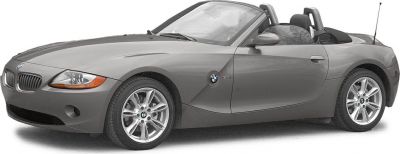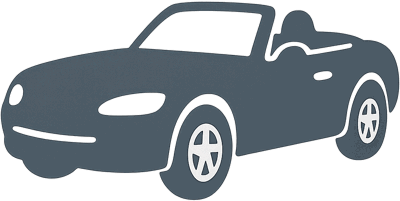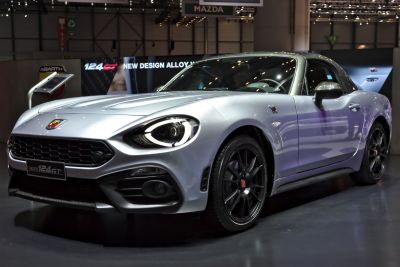 1997 BMW Z3 M (E36/7) Dimensions, Size & Specs
1997 BMW Z3 M (E36/7) Dimensions, Size & SpecsMeasurements of the 1997 BMW Z3 M, engineered for optimal performance and comfort
| Dimensions | |
|---|---|
| Length: | 4025 mm158.5 in13.2 ft |
| Width: | 1740 mm68.5 in5.7 ft |
| Height: | 1268 mm49.9 in4.2 ft |
| Trunk Capacity (Max): | 165 liter5.8 cu ft |
| Weight Specifications | |
| Curb Weight: | 1360-1450 kg2998-3197 lbs |
| Maximal permitted Weight: | 1600-1640 kg3527-3616 lbs |
| Tire Specifications | |
| Rims Size: |
|
| Tire Sizes: |
|
The BMW Z3 M (E36/7), produced between 1997 and 2003, represents a high-performance iteration of the celebrated BMW Z3 roadster. This two-seat sports car combines the compactness needed for agile driving with the powerful engineering BMW is known for. The Z3 M features a length of 4025 mm (158.5 inches), a width of 1740 mm (68.5 inches), and a height ranging between 1266 mm and 1268 mm (49.8–49.9 inches), making it a low-profile, sleek vehicle designed for dynamic handling and road presence.
Weighing between 1360 kg and 1450 kg (2998 to 3197 lbs) depending on configuration, the Z3 M balances robust build quality with lightweight agility. The maximum loaded weight ranges from 1600 kg to 1640 kg (3527 to 3616 lbs), ensuring a solid yet responsive ride. Its sporty stature is complemented by 17-inch rims, fitted with wide 245/40 R17 and 245/45 R17 tires to provide excellent grip and road feedback.
Despite being a compact roadster, the Z3 M offers practical aspects such as a luggage capacity of 165 liters (5.8 cubic feet) when the rear seats are folded, granting utility alongside performance. This generation of the Z3 M continues the tradition of BMW’s motorsport heritage with sporty design cues and enhanced driving dynamics, making it a favorite among enthusiasts who seek a thrilling driving experience without excessive size.
Overall, the BMW Z3 M (E36/7) blends performance, style, and compact dimensions, suitable for drivers who appreciate precision engineering and an engaging open-top drive in a stylish package. Its production span from 1997 to 2003 marked it as an iconic model in BMW's lineup of roadsters.
Discover the standout features that make the 1997 BMW Z3 M a leader in its class
Have a question? Please check our knowledgebase first.
The BMW Z3 M (E36/7), manufactured from 1997 to 2003, features a compact and sporty exterior design with a length of 4025 mm (158.5 inches), a width of 1740 mm (68.5 inches), and a height ranging from 1266 to 1268 mm (49.8 to 49.9 inches). These dimensions reflect its roadster heritage, offering a sleek and agile stance suitable for sporty driving dynamics and urban maneuverability.
The curb weight of the BMW Z3 M (E36/7) varies between 1360 kg (2998 lbs) and 1450 kg (3197 lbs), depending on specification and equipment. Its maximum gross vehicle weight ranges from 1600 kg (3527 lbs) to 1640 kg (3616 lbs). This weight balance contributes to its nimble handling characteristics and overall driving performance, with a chassis that remains light enough for sporty agility yet solid enough for good road presence.
The BMW Z3 M (E36/7) roadster offers a luggage capacity of 165 liters (about 5.8 cubic feet) with the rear seats folded down. As a two-seater sports car, its cargo space is limited but sufficient for light travel essentials or small luggage, which reflects its focus on driving enjoyment over extensive cargo practicality.
Yes, the BMW Z3 M (E36/7) generally fits comfortably inside a standard residential garage. Standard garages typically measure around 2400 mm (8 feet) in width and 4800 mm (16 feet) in length. With the Z3 M's dimensions of 4025 mm (158.5 inches) in length and 1740 mm (68.5 inches) in width, it leaves ample space for opening doors and storing additional items, making it a practical sports car for daily use in typical home garages.
Compared to the original BMW Z3 (E36/7) non-M variant, the Z3 M maintains the same overall length and width — 4025 mm (158.5 inches) in length and 1740 mm (68.5 inches) in width. However, the Z3 M is typically slightly heavier due to a more powerful engine and performance-focused components, with curb weights ranging from 1360 to 1450 kg compared to the lighter base model. The Z3 M also emphasizes a more aggressive stance and enhanced handling, making its dimensions better suited for high-performance driving.
In the compact roadster segment, the BMW Z3 M (E36/7) stands as a moderately sized two-seater sports car. Its 4025 mm (158.5 inches) length and 1740 mm (68.5 inches) width put it in range with rivals like the Porsche Boxster and Mazda MX-5 of the era, although it tends to be slightly longer and wider than the MX-5, offering a more substantial and planted presence on the road. Its size balances sportiness and usability, providing enough cabin space for driver and passenger comfort without sacrificing nimbleness.
The BMW Z3 M (E36/7) is equipped with 17-inch rims paired with tire sizes 245/40 R17 on the front and 245/45 R17 on the rear. These tire specifications contribute to improved grip and cornering performance, essential for the M model’s sporty dynamics. The staggered setup with slightly higher sidewalls at the rear helps maintain traction and enhances ride comfort without compromising handling precision, consistent with the car’s purpose as a driver-focused roadster.
The BMW Z3 M (E36/7) has a height ranging from 1266 to 1268 mm (approximately 49.8 to 49.9 inches). This low-profile height contributes to the car’s sporty silhouette and low center of gravity, which improves handling balance. While the relatively low height enhances aerodynamic performance and driving feel, it may require drivers and passengers to bend slightly when entering and exiting the vehicle. Inside, headroom is adequately designed for comfort but is typical for a roadster, accommodating average-sized adults comfortably.
The BMW Z3 M (E36/7) is renowned for its balanced handling, powerful inline-six engines, and engaging driving dynamics. It delivers robust acceleration and sharp cornering responses thanks to its sport-tuned suspension, wider tires, and lightweight chassis. The roadster layout provides an open-top driving experience with precise steering feedback. Its combination of sporty performance, balanced weight distribution, and classic BMW engineering make it a favorite among driving enthusiasts seeking both daily usability and weekend excitement.
The curb weight of the BMW Z3 M (E36/7) ranges from about 1360 kg (2998 lbs) to 1450 kg (3197 lbs), which is relatively lightweight for a performance roadster of its class. This lightweight construction enhances the vehicle’s agility, allowing for nimble handling, quicker directional changes, and a more connected driving feel. Additionally, the moderate weight supports improved brake performance and acceleration. However, while beneficial for performance, the additional weight from sport-focused parts compared to the base Z3 may slightly affect fuel efficiency, which remains reasonable given its engine size and sporty tuning.
Discover similar sized cars.

| Production: | 2002-2006 |
|---|---|
| Model Year: | 2003 |
| Length: | 4091 mm161.1 in |
| Width: | 1781 mm70.1 in |
| Height: | 1299 mm51.1 in |

| Production: | 2004-2019 |
|---|---|
| Model Year: | 2004 |
| Length: | 4010 mm157.9 in |
| Width: | 1720 mm67.7 in |
| Height: | 1220 mm48.0 in |

| Production: | 2018-2019 |
|---|---|
| Model Year: | 2018 |
| Length: | 4054 mm159.6 in |
| Width: | 1740 mm68.5 in |
| Height: | 1233 mm48.5 in |
